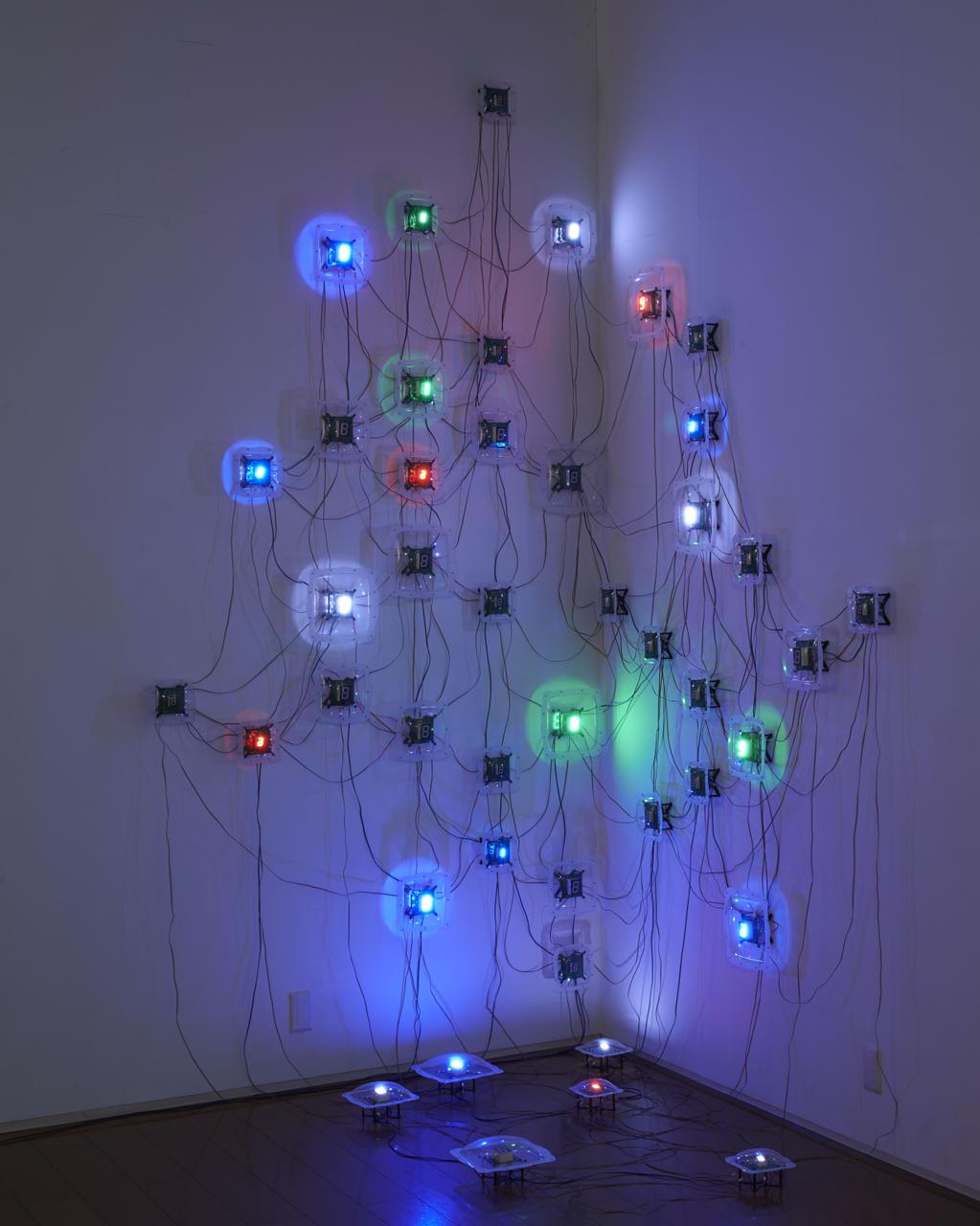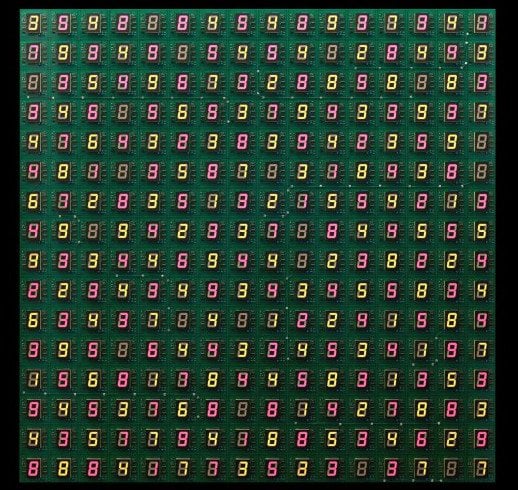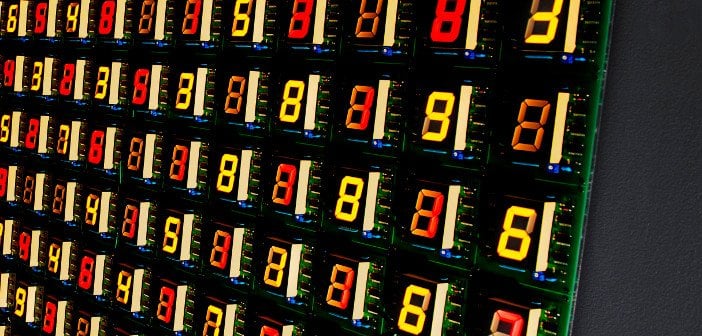Visualising Information: Turning Data into Art
Boolean Expressions; Contemporary Art and Mathematical Data, and Mark Curran’s The Economy of Appearances, are two exhibitions currently showing in Ireland. These exhibitions provide examples of the interdisciplinary relationship between the sciences and the arts, a fascinating trend that is growing and gaining attention within the international art world.
Boolean Expressions utilises the work of a range of prominent international artists. Their work encapsulates an expansion towards the technological and scientific. The exhibition is of course inspired by George Boole, a pivotal historical figure and the first Professor of Mathematics at University College Cork. Boole has been described as the “father of the information age” due to his legacy of Boolean algebra, which has become pertinent to electronics and computer programming languages. The exhibition, in keeping with Boole’s admirable foresightedness, explores how artists utilise mathematical ideas and systems as inspiration for their work. Combining the use of mathematical data, digital technology, geometric forms, and line drawings, the exhibition illustrates the cross-disciplinary interest between the arts and science.

Meanwhile, Curran’s exhibition draws from a number of his previous long-term, multimedia research projects which focus on the investigation of global capital flows, and “the function and condition of global markets.”1 This current exhibition utilises film, photography, data analysis, and algorithms. These factors combine to provide a subtle commentary on the normalisation of crisis, the consequences of global markets, and the use of technology within global market activity. These are timely and relevant subjects which affect all people, but tend to be ignored due to convoluted language and the propagation of statistics, values, and numbers. Curran’s exhibition aims to make the confusing visible and comprehensible through the discipline of art.

Both exhibitions are evident of a prevalent interdisciplinary approach to artistic production. Embracing both the artistic and the scientific, proposes an enlightening and educating convergence. It is increasingly obvious that the society in which we live is an ‘information society’ where “the creation, movement and analysis of ideas is at the centre of cultural and economic life.”2 Therefore, it is unsurprising that the art of such a society would reflect these concerns. These exhibitions have provoked me to ruminate on the topic of ‘information and knowledge visualisation,’ one of the many meta narratives within the continuing evolution of contemporary art.
As citizens of the 21st century, we spend our lives engaged with enormous amounts of digital data and technological systems. The artists have undertaken the challenge of representing these complex systems, and our relationship with technology, through a visualisation of the information. The process of representing complex data as simplified forms is known as Information Visualisation. However, not to be confused with the reproduction of scientific data; these visualisations are much more rooted in an artistic field which utilise science as an inspiration, as well as a method, to produce abstract forms.
Through the influence of Information Visualisation we seek to make subjects communicable and comprehensible. Artists can experiment within the field, and deviate towards abstract representations, rather than visual reproductions of specific facts. We see this within Boolean Expressions, where artists humanise technologically-driven issues that underpin our society, and explore mathematical ideas through reductive and simplified gestures. For example, the work of Sol LeWitt whom described the aim of the artist as “to give viewers information,”3 is used to create geometric patterns to transform the Glucksman Gallery’s interior architecture.

Mark Curran’s retrospective is similar in his approach; using multi-media, photographs, films, and portraits, he aims to ‘re-visualise’ a public which is removed from the global markets we are currently subject to. In addition to this, Curran has utilised an algorithm soundtrack created by his brother Ken Curran, where “identification of the application of the word ’market’ in the public speeches by national Minister of Finance.”4 Through the use of technology Curran reduces large amounts of data to specific information, unveiling a critique of the systems through the very scientific tools it employs, and creating a more meaningful engagement with the issue.
These exhibitions articulate the convergence of science and artistic expression, which in turn increases the vitality of both disciplines, and a wider range of interpretation. Their reductive nature abstracts information, but in doing so, disseminates scientific ideas, data, or actual facts, to a wider and more diverse audience. This interdisciplinary approach provides alternative constructs to the role of the artist, and creates a more comprehensible and tangible experience for the audience.

Boolean Expressions; Contemporary art and Mathematical Data
From July 25th to November 8th
at Cork City’s Glucksman Gallery
http://www.glucksman.org/BooleanExpressions.html
Mark Curran’s the Economy of Appearances
From September 4th to October 30th
at the Limerick City Gallery of Art, Carnegie Building
http://gallery.limerick.ie/MarkCurran-TheEconomyofAppearances.html
Images via:
www.davidputtnam.com
www.irishtechnews.net
www.techcentral.ie
1 The Economy of Appearances, Mark Curran, Eflux (2015)
2 Stephen Wilson, in Information Arts:Intersections in Art, science and technology, (Massachusetts: The MIT Press, 2002), 3.
3 Warren Sack quotes Sol Le Witt in, “The Visualisation of Information Aesthetic” in, Context Providers, ed Margot Lovejoy, (Bristol: Intellect, 2011) 125
4 The Economy of Appearances, Mark Curran, Eflux (2015)
